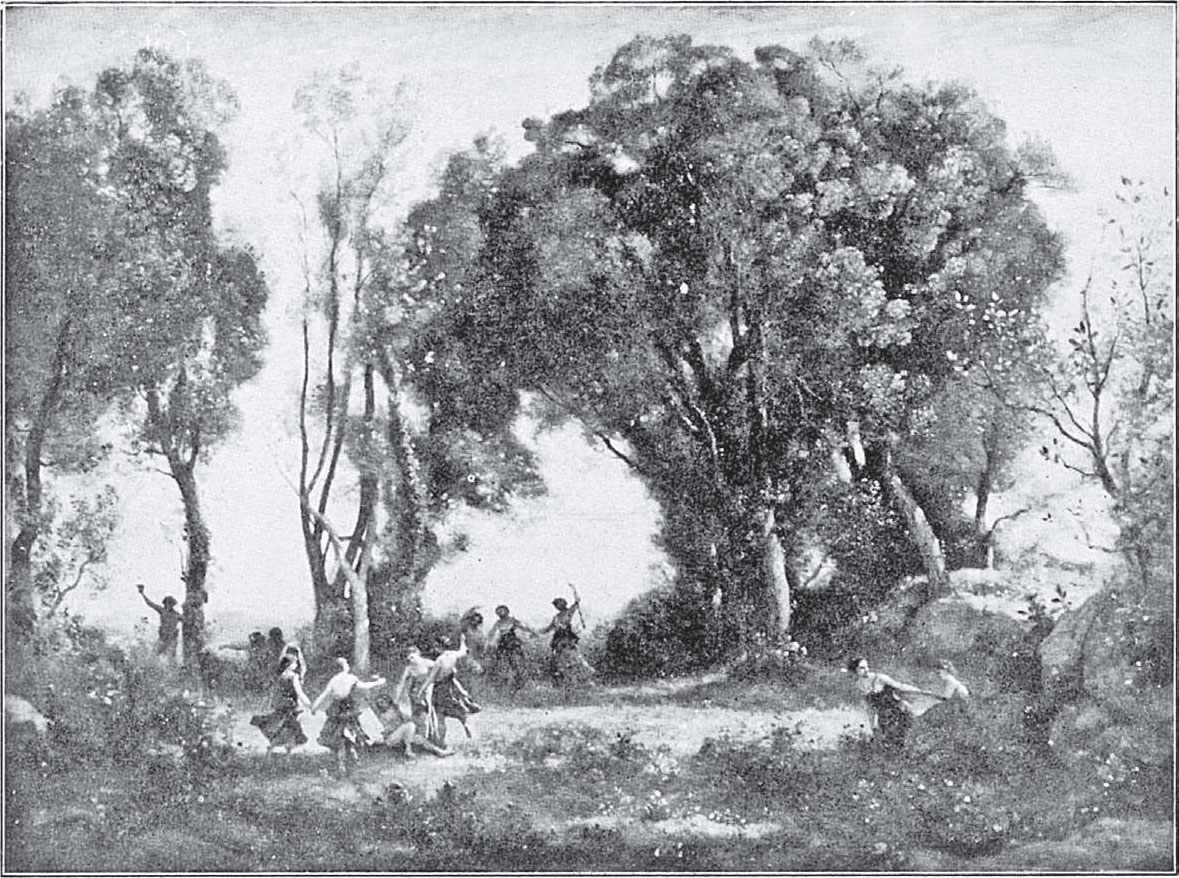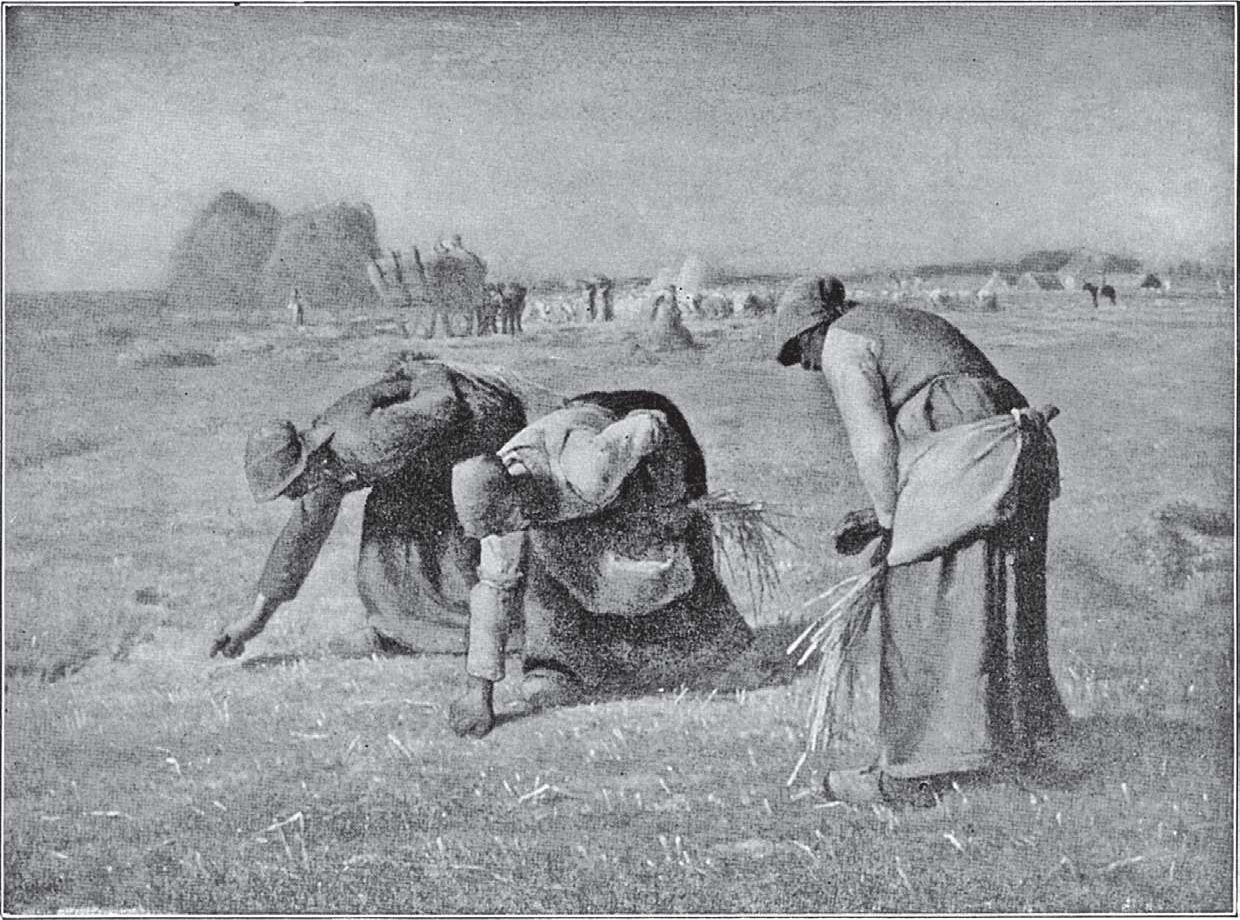





W HY should I tell you about very poor painters? If a painter can’t paint good pictures, why mention him at all?Because... these poor painters in this chapter did paint good pictures. They were poor in money, not poor in painting.
One of these poor, good painters was a Frenchman named Corot (Ko-ro). He was poor because no one would buy his paintings. Not until he was fifty years old did he sell a single picture. He wasn’t quite as poor as that sounds, however,because his father gave him an allowance of so much a year.It was a very small allowance, but Corot managed to get along on it.
After Corot finished school he wanted to be a painter.But his father was in the linen business, and into the linen business the son had to go. Still he kept hoping he could be a painter, and finally his father let him stop selling linen and begin to study painting. Corot went to Italy for several years and became a landscape painter. Then he went back to France. He painted many fine landscapes, but no one seemed to want to buy them.
Now, at this time some other painters who were very poor in money, found they could live more cheaply in the little village of Barbizon than they could in the city of Paris. And they found, too, that the country around Barbizon was a much better place in which to paint landscapes. There they could see the forests and streams and fields that they loved to paint. So these poor-in-money painters moved to little cottages in and near Barbizon. We call them the Barbizon Painters.
It was Corot’s idea to live in Barbizon. He liked to get up early in the morning and go out to study the trees and fields in the early light of dawn, when often the dew was on the ground and everything looked misty. He would make sketches, or quick drawings, of what he saw, and then come home and paint. He liked twilight and moonlight, too, and often painted twilight and moonlight landscapes. His pictures have a magical, dreamy beauty that has made them famous all over the world.
When he was an old man Corot’s pictures began to sell.Money and fame came rolling in at last. Corot had always loved to help other people in any way he could, so now that he was wealthy he had a fine time giving most of his money away to people who needed it.

NO.25-1 DANCE OF THE

Corot was always cheery and happy with his friends,although his landscapes often seem dreamy and sad instead of cheerful and gay. Every one loved him and called him Father Corot, and so it is pleasant to learn that he finally became so famous.
Another Barbizon painter was much poorer in money than Corot. He was one of the first to go to Barbizon. He took his wife and children and lived in a little three-room house that had no wooden floors, just packed earth. Yet he was one of the greatest painters of France, Jean François Millet.
Millet had always been poor. His father was a farmer, or peasant, and when Millet was a boy he worked on his father’s farm. When he saw some pictures in an old Bible, he started to draw. At the rest hour in the fields the other workers would all take naps, but young Millet would spend the time drawing pictures. Finally the village where he lived gave him a little money to go to Paris to study art.
When Millet got to Paris he had a terrible time. He was awfully shy and not used to city ways, so he didn’t get along well at all. He barely made enough money for food, by selling little pictures he painted. He liked best to paint the poor farmer people or peasants whose life he knew so well, and at last when he was almost starving some one bought one of his peasant paintings. This gave him enough money to get out of Paris and go to Barbizon, and in Barbizon he lived the rest of his life.
Millet’s pictures of peasants at work were painted in an unusual way. The painter would go out on the farms and watch the people at work — digging, hoeing, spreading manure, sawing wood, churning butter, washing clothes, or sowing grain. Then he would come home and paint what he had seen. His memory was so good that he could paint at home without a model and get all the movements of his figures right. When he did need a figure to go by he would ask his wife to pose for him.

NO.25-2 THE GLEANERS MILLET
One of Millet’s paintings is called “The Sower.” It shows a man planting seed. Have you ever seen a farmer sowing a field? In our country it is so often done with horses and a machine, that perhaps you don’t know what a swing there is to it when it is done on foot. The sower’s hand keeps time with his step. It reaches into his bag for seed and then swings backward to scatter the seed, and with each swing of his hand the sower strides forward. In Millet’s picture the sower has been working hard, but his swinging step and outflung arm still move smoothly, in time, like a machine. Only the man’s head shows how tired he is.
Millet made several pictures of “The Sower”, all somewhat alike. The most famous “Sower” is now in the United States,in Boston.
Another picture that is as famous as “The Sower” is called“The Gleaners.” A gleaner is some one who picks up what is left in the field after the wheat has been harvested. When farmers are very poor, as they were near Barbizon, even the little that the gleaners can find is a help. You can see from Millet’s picture what back-breaking work gleaning must be.And it is done by women!
Many copies have been printed of still another picture by Millet. You can sometimes buy them in the ten-cent stores.This famous painting is called “The Angelus.” It shows a French farmer and his wife stopping their work in the fields to bow their heads as they hear the church bell ring out the call to prayer, the Angelus.
Like Corot, Millet at last was recognized as a great painter before he died. But he always remained poor, and when he died his friend Corot had to give his widow money to live on.
Some of the other Barbizon painters became famous too.They all used to meet in a big barn where they had tacked drawings on the walls, and there they would talk about the painting they all loved so to do.
I’d like to tell you about these other friends of Millet and Corot but — there isn’t room.